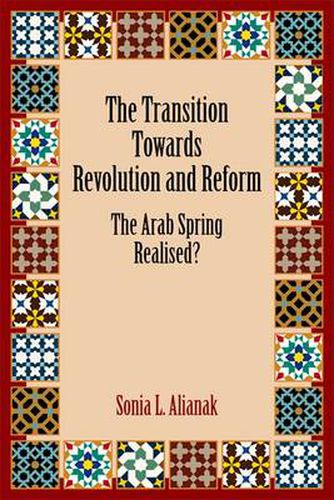Readings Newsletter
Become a Readings Member to make your shopping experience even easier.
Sign in or sign up for free!
You’re not far away from qualifying for FREE standard shipping within Australia
You’ve qualified for FREE standard shipping within Australia
The cart is loading…






Why do some Arab Spring uprisings led to reforms and others to revolutions? The Arab Spring revolutions ended with a transition toward democracy for the peoples of Tunisia, Egypt, Morocco and Jordan. Initially, they elected moderate Islamist parties to lead them out of economic deprivation and corruption. How successful were they? This study looks at the relative success of the move to democracy in these four Middle Eastern countries, comparing the secular leaders of Tunisia and Egypt, and their desire for revolution, with the monarchs of Morocco and Jordan, and their priority of reform. In contrast with the monarchs, the secular leaders did not resort to the palliative of religion to ensure the stability of their rule and were, as a result, unable to survive. It uses four case studies: Tunisia, Egypt, Morocco and Jordan. It explores the differences between revolution in republics and reform in monarchies in the Arab world following the Arab Spring. It explains the reforms in Morocco and Jordan in an innovative way that shows how the leaders used religion to survive. It takes a creative approach to analysing revolutions in Tunisia and Egypt, which can also be applied to other revolutions in the Middle East. It contributes to the reader’s understanding of trends in the electoral victories of moderate Islamist parties in the transition toward democracy following the Arab Spring.
$9.00 standard shipping within Australia
FREE standard shipping within Australia for orders over $100.00
Express & International shipping calculated at checkout
Why do some Arab Spring uprisings led to reforms and others to revolutions? The Arab Spring revolutions ended with a transition toward democracy for the peoples of Tunisia, Egypt, Morocco and Jordan. Initially, they elected moderate Islamist parties to lead them out of economic deprivation and corruption. How successful were they? This study looks at the relative success of the move to democracy in these four Middle Eastern countries, comparing the secular leaders of Tunisia and Egypt, and their desire for revolution, with the monarchs of Morocco and Jordan, and their priority of reform. In contrast with the monarchs, the secular leaders did not resort to the palliative of religion to ensure the stability of their rule and were, as a result, unable to survive. It uses four case studies: Tunisia, Egypt, Morocco and Jordan. It explores the differences between revolution in republics and reform in monarchies in the Arab world following the Arab Spring. It explains the reforms in Morocco and Jordan in an innovative way that shows how the leaders used religion to survive. It takes a creative approach to analysing revolutions in Tunisia and Egypt, which can also be applied to other revolutions in the Middle East. It contributes to the reader’s understanding of trends in the electoral victories of moderate Islamist parties in the transition toward democracy following the Arab Spring.